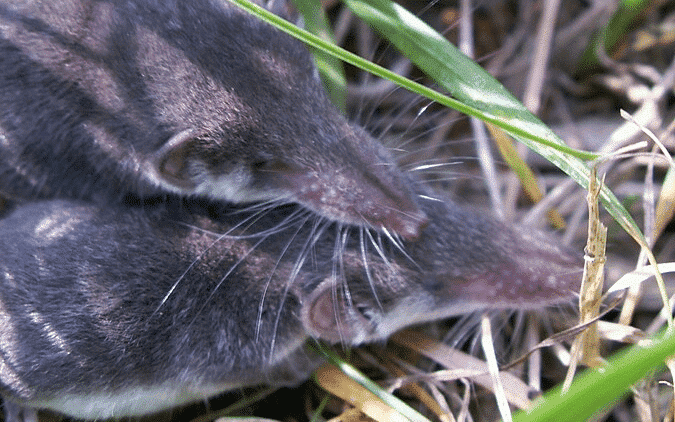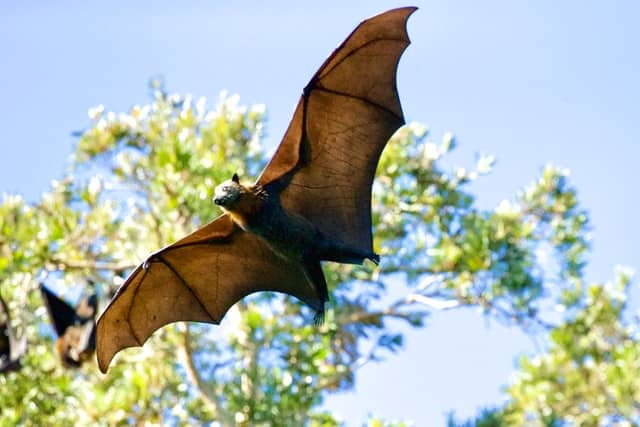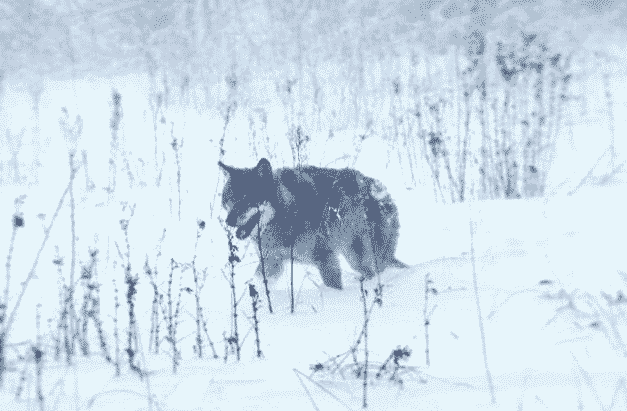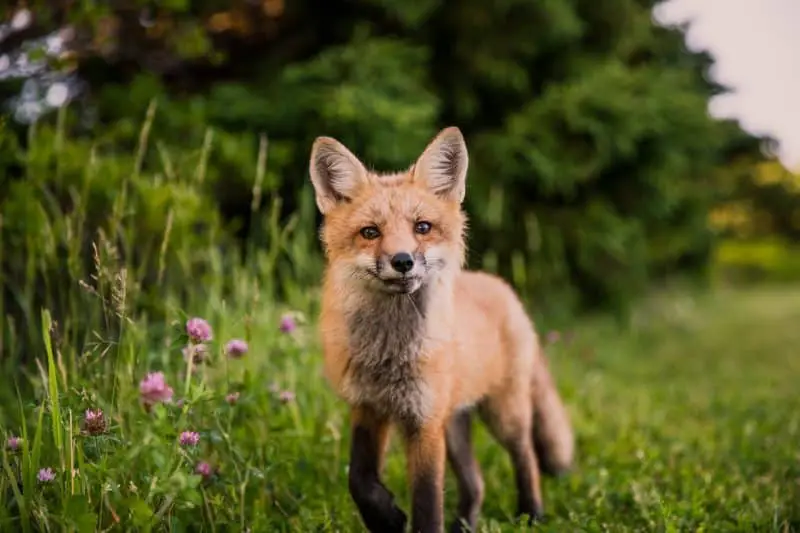Get ready to explore the animals and wildlife in Germany!
While this enchanting country is celebrated for its mountains, seas, rich history, and culture, there’s a side to Germany that often stays under the radar—the captivating wildlife that thrives in both its serene countryside and bustling cities.

Step off the beaten path with us as we unfold the tales of six extraordinary wildlife creatures that quietly inhabit Germany. From the untamed to the extraordinary, these animals have stories to tell. Navigate through the links below to meet the one that beckons you the most, or stick around for the entire adventure to revel in the fascinating details of each creature.
Key points
| Aspect | Description |
|---|---|
| Appearance | Captivating feline with a formidable visage, featuring a grey-brown coat adorned with dark stripes on the head, neck, limbs, and along the back. May be confused with a sizable domestic tabby cat. |
| Distinctive Characteristics | – Lengthy, dense coat – Broad head and relatively flat face – Dark stripes on head, neck, limbs, and along the back – Robust tail with dark rings and distinctive black tip |
| Habitat and Range | Spans from Europe to Russia, thriving in diverse territories. Particularly recognized for its presence in the woodlands of the German countryside. |
| Survival Tactics | Relies on finding adequate cover for hunting and rest. Proficient climber but primarily conducts ground-based hunts, showing a preference for nocturnal activities. |
| Hunting Techniques | Combination of slow, stealthy movements and the strategic sit-and-wait predator method. Diet includes various small prey, with a preference for rodents. May engage with larger animals opportunistically. |
| Population Status and Threats | Unknown exact status, but a concerning decline in population. Historically considered vermin and hunted for its fur coat. Threats include habitat loss, hybridization with domestic cats, and disease transmission. |
| Vital Statistics | – Lifespan: Up to fifteen years in the wild – Weight: Three to six kilograms in full adult size – Body Length: 50-80 cm – Tail Length: Just over a ruler long (40 cm) |
European Wildcat

The European wildcat is a captivating feline with a formidable visage reminiscent of a powerful wild predator. Featuring a striking grey-brown coat adorned with dark stripes on the head, neck, limbs, and along the back, this wildcat’s appearance might even lead to confusion with a sizable domestic tabby cat.
Noteworthy Characteristics:
- Lengthy, dense coat
- Broad head and relatively flat face
- Dark stripes on the head, neck, limbs, and along the back
- Robust tail with dark rings and distinctive black tip
Habitat and Range: Stretching its presence from Europe to Russia, the European wildcat thrives in diverse territories, with a special affinity for the enchanting woodlands of the German countryside. Its habitat versatility is a testament to its adaptability, as it spans across various landscapes.

Survival Tactics: A versatile inhabitant, the European wildcat’s survival hinges on finding adequate cover for hunting and rest. Although proficient at climbing, it predominantly conducts ground-based hunts, showcasing a preference for nocturnal activities.
Hunting Techniques: Engaging in a combination of slow, stealthy movements and the strategic sit-and-wait predator method, this elusive feline preys on various small creatures. While rodents are a favored choice, the European wildcat doesn’t shy away from larger animals like hares, rabbits, and young deer when the opportunity arises.
Population Status and Threats: Despite its mysterious allure, the exact status of the European wildcat in the wild remains unknown, with a concerning decline in its population. Historically considered vermin, this wildcat has faced extensive hunting for its fur coat. Additional threats include habitat loss, habitat destruction, hybridization with domestic cats, and disease transmission from their domestic counterparts.
Wild Boar

Wild boars are interestingly close relatives to domestic pigs, which have been domesticated on a massive scale for meat production. The perceptions of these creatures vary across different places and eras, ranging from symbols of courage to occasional nuisances. Wild boars make unexpected forays into urban areas as their numbers surge, showcasing their remarkable adaptability.
Suidae in the Animal Kingdom: Officially classified as Suidae, wild boars are celebrated among hunters for their succulent meat, offering a versatile cooking experience akin to pork. This game animal typically resides in herds, primarily in forested terrain, but displays an impressive ability to adapt to diverse environments, including marshlands, scrublands, and the fringes of farmlands where they can cause substantial crop damage.
Rising Populations in Urban Landscapes: Over the past three decades, the wild boar population in Europe has experienced a significant surge, extending into peri-urban and urban areas. Berlin, for instance, has become a home to an estimated 7,000 to 8,000 wild boars, potentially seeking refuge from hunting grounds and searching for sustenance.
Hunting Practices: Due to the abundance of wild boars in numerous regions, hunting has become a widespread practice. Techniques include drovers driving the animals toward shooters and hound hunting with packs of dogs. Ground blind hunting, where hunters conceal themselves behind natural screens, is also employed. Stalking, however, is challenging due to the nocturnal nature of wild boars.

Traditions and Honoring the Quarry: In the tradition-steeped world of wild boar hunting, it is customary for hunters to honor their quarry immediately after a kill. This may involve placing an oak branch in the animal’s mouth. As with all game, wild boars must be promptly gutted in the field to preserve meat quality, as fermentation in the intestines can compromise it.
Caution in Urban Encounters: While wild boars are not inherently aggressive, caution is advised in urban settings. For instance, encounters in Berlin necessitate avoiding close approaches, as these animals may become frightened and react unpredictably. Explore the intriguing intersection of wild boars and urban jungles, where adaptability, hunting traditions, and coexistence with humans weave a complex tapestry.
European Badger

Meet the distinctive black-and-white striped badger, a renowned species gracing the landscapes of Europe, particularly Germany. Armed with robust front paws, these land predators and omnivores showcase remarkable agility in their pursuit of a diverse diet, including small mammals, birds’ eggs, earthworms, fruits, and plants.
Physical Characteristics: Standing at a modest 30 cm in height and measuring 56–81 cm in length (excluding the 12–20 cm tail), these black-and-white badgers weigh a compact 8–10 kg or more. Despite their small stature, their quickness is undeniable, making them adept at evading threats by swiftly retreating into their setts.
Family Life in Underground Burrows: Badgers lead a communal lifestyle in large family groups, residing in intricate burrows known as a ‘sett.’ Easily identifiable, an inhabited sett boasts clean doorways adorned with piles of used bedding, such as hay and leaves. Nearby, a distinctive and somewhat pungent pit serves as the badgers’ communal toilet—a touch of civilization in the animal kingdom.
Life Cycle and Adaptability: Badger cubs make their debut in the world during January or February, spending their initial months underground and cautiously emerging with the advent of spring. Adult European badgers, boasting a few natural predators, thrive in their environments, demonstrating resilience and adaptability.
Challenges and Conservation: Despite their relatively secure position in the ecosystem, European badgers face challenges such as Tuberculosis in some regions. As guardians of the land, understanding and addressing these challenges contribute to the broader conversation around wildlife conservation.
Embark on a journey into the mysterious world of the black-and-white badger, where agility, familial bonds, and adaptability converge to create a captivating narrative of survival and coexistence in the European wilderness.
Bicolored Shrew

Meet the bicolored shrew, also known as the white-toothed shrew, a small mammal distinguished by its captivating coloring and unique dental features. It is so small that it is included in our list of the 9 smallest mammals in the world! With a medium to dark brown back and a striking white or light grey underbelly, this shrew immediately stands out due to its well-defined color contrast.
Dental Marvels: One of the most intriguing aspects of the bicolored shrew is its bright, white teeth—striking not due to diet but owing to the absence of natural pigmentation. These sharp and tightly crowded teeth set them apart even among their white-toothed shrew counterparts, making them a noteworthy subject for dental enthusiasts.
Carnivorous Feasting: Unleashing their aggression as carnivores, bicolored shrews exhibit a penchant for small prey, including mammals, frogs, and lizards. In times of scarcity, they turn to insects for sustenance. Notably, their feeding habits include a peculiar preference: consuming the prey’s brains first before indulging in the rest, leaving behind unwanted limbs, skin, and tails.
Size and Habitat: Despite their fearsome reputation, bicolored shrews are relatively small, weighing a mere 0.024 pounds and measuring 3.82 to 5.24 inches in length. Native to Central Europe, these shrews thrive in dry, temperate habitats such as woodlands and grasslands, where ample hiding places abound.

Home in the Wild: Bicolored shrews are expert burrowers, creating tunnels under rock piles or dense brush to conceal and protect their homes. Gardens, farmlands, and farm buildings become their abodes, much to the chagrin of local inhabitants. Their presence, however, adds a touch of wildlife to these surroundings.
Conservation Outlook: Abundant in Central Europe, the bicolored shrew currently faces no imminent risk of extinction. Nonetheless, they are hunted by various predators, including snakes, owls, and other carnivorous mammals. While spotting these aggressive little mammals is not a challenge, observers are advised to maintain a safe distance.
Embark on a journey into the realm of the bicolored shrew, where unique coloring, dental marvels, and predatory instincts converge, offering a glimpse into the captivating life of this remarkable mammal in Central Europe.
Greater Horseshoe Bat

Addressing Misconceptions: Bats, COVID-19, and the Imperiled Greater Horseshoe Bat
Bats, often unfairly linked to the onset of COVID-19, face a wave of skepticism that threatens not only their innocent existence but also their already declining populations. The greater horseshoe bat, once a cave-dweller, now seeks refuge in old buildings like churches and barns, contributing to its rarity in Germany and Europe.
Nocturnal Wonders: All European bats, including the greater horseshoe bat, are nocturnal wonders that navigate the dark using echolocation to feed on midges, moths, and other flying insects. Despite their essential role in controlling insect populations, these creatures are facing a decline in numbers, exacerbated by unfounded fears surrounding the pandemic.

Life Cycle and Decline: In early summer, greater horseshoe bats emerge at dusk and dawn, preferring nocturnal roosting. Female bats form maternity colonies from May to raise their pups. Hibernating over winter in caves, disused mines, tunnels, and cellars, these bats face challenges not only from habitat loss but also from the unfounded stigma linked to COVID-19.
Behavioral Insights: Choosing specific perches in caves or trees, greater horseshoe bats patiently await passing insects. When prey is spotted, they skillfully fly out to catch it in the air, leaving behind insect remains beneath their perches in spring and autumn. Understanding these behavioral nuances is crucial for appreciating their ecological significance.
Red Fox

The red fox stands as one of the most recognized fox species globally, showcasing its adaptability across a multitude of habitats—forests, grasslands, mountains, and deserts. Beyond the wild, these foxes seamlessly navigate human environments, from farms to suburban areas and even bustling communities, earning them a reputation for legendary intelligence and cunning.
Resourceful Diet: As solitary hunters, red foxes display a versatile palate, feasting on rodents, rabbits, birds, and various small game. Their adaptability extends to their diet, allowing them to consume fruit, vegetables, fish, frogs, and even worms. In urban landscapes, clever foxes opportunistically indulge in garbage and pet food, occasionally causing mischief in home gardens, especially in major cities like those in Germany.
The Multi-Purpose Tail: The red fox’s thick tail serves not only for balance, akin to a cat’s tail, but also as a multifunctional tool. Acting as a warm cover in cold weather, the tail doubles as a signal flag for communication among foxes. Scent posts, created by urinating on trees or rocks, further amplify their presence and mark their territory.
Family Dynamics and Mating Rituals: Winter heralds the mating season for foxes, with vixens typically giving birth to litters of 2 to 12 pups. Initially brown or grey, the pups develop their iconic red coats within the first month, showcasing a spectrum that includes golden, reddish-brown, silver, or even black variations. Parental care extends through the summer until the young foxes strike out on their own in the fall.

Challenges and Controversies: Despite their adaptability, red foxes face challenges such as sport hunting and occasional culling due to perceptions of them as destructive pests or carriers of rabies. While not extensively hunted, these controversies underscore the delicate balance between coexistence and conflict with human activities.
As we marvel at the global nomad that is the red fox, let’s appreciate its ability to thrive in diverse environments, showcasing intelligence, adaptability, and a captivating array of behaviors that contribute to the intricate tapestry of the natural world.
Wolves

In Germany, while there are around 1,800 wolves, wolf centers also exist where you can see and observe them from a close distance. One that exists is the Wolfcenter in Dörverden in Lower Saxony.
Two wolf packs live here in a vast game reserve. One of the packs was raised by hand, meaning the wolves are used to humans and do not mind your presence. The second pack roams completely wild through their territory and rarely shows itself to the center’s visitors.

During a guided tour, you will learn some cool facts about the fascinating four-legged friends and the opportunity to watch the wolves at close range!
For even more adventure-tingling, you can stay in one of the Tree Inn’s tree houses in the middle of the enclosure. Here you have enough space to watch the wolves all night long with three other adventurers
Operators:
Operators
Wildlife in Germany does not stop there! Many other amazing animals are worth mentioning, like the European Pine Martin and the Chamois! Would you ever want to see some wildlife on your next visit to Germany?
Operators such as these will help you on this quest!
Summary on Wildlife in Germany
The current global situation is devastating economically and on a humanitarian spectrum. However, the silver lining of this may be found in the ability of Wildlife to regain some of its lost ground and make a comeback” in some ways.
The limited travel to wild areas and less transportation disrupting the sky and seas have enabled more animals to feel free and not be hurt through artificial constructs.
Wildlife in Germany may not be a top priority to some people, and it is even less known to many the immense diversity that Germany offers. However, supporting operators with rehabilitation incentives during these challenging times can make a big difference.
We encourage you only to support organizations doing real good for animals. In the best case scenario, going to see wildlife in the wild in a non-obtrusive manner.
Hopefully, you are excited for travel to resume as usual, but let’s not forget that the animals have enjoyed this break too. If you enjoyed this article about fascinating Wildlife in Germany, you might be interested in ready blogs about Wildlife in Sweden and Wildlife in Greece.
Thanks for reading about wildlife in Germany. We appreciate you. Let’s give nature around the globe more love!
Frequently Asked Questions (FAQs)
Germany boasts a rich and diverse array of wildlife. In its forests, you can encounter various mammals such as red deer, roe deer, wild boars, and smaller mammals like foxes and badgers. The country is also home to a variety of bird species, including eagles, hawks, and owls. Lakes and rivers harbor fish species, while amphibians and reptiles thrive in wetland areas.
Predators in Germany include carnivorous mammals like foxes, badgers, and wildcats. Birds of prey such as eagles, hawks, and owls are also considered predators. In certain areas, larger predators like wolves have made a comeback in recent years, and there are occasional reports of lynx sightings.
Germany does not have an officially designated national animal. However, the eagle, particularly the white-tailed eagle, is often associated with Germany and is featured in the country’s coat of arms. The red deer is also considered a symbol of the German forests and is emblematic of the country’s wildlife heritage.
- Top 5 Rarest Animals in the World - April 15, 2024
- Mongoose Meets One Of The Deadliest Snakes Alive - April 8, 2024
- Watch: Komodo Dragon Swallows Baby Goat In Seconds - March 28, 2024


